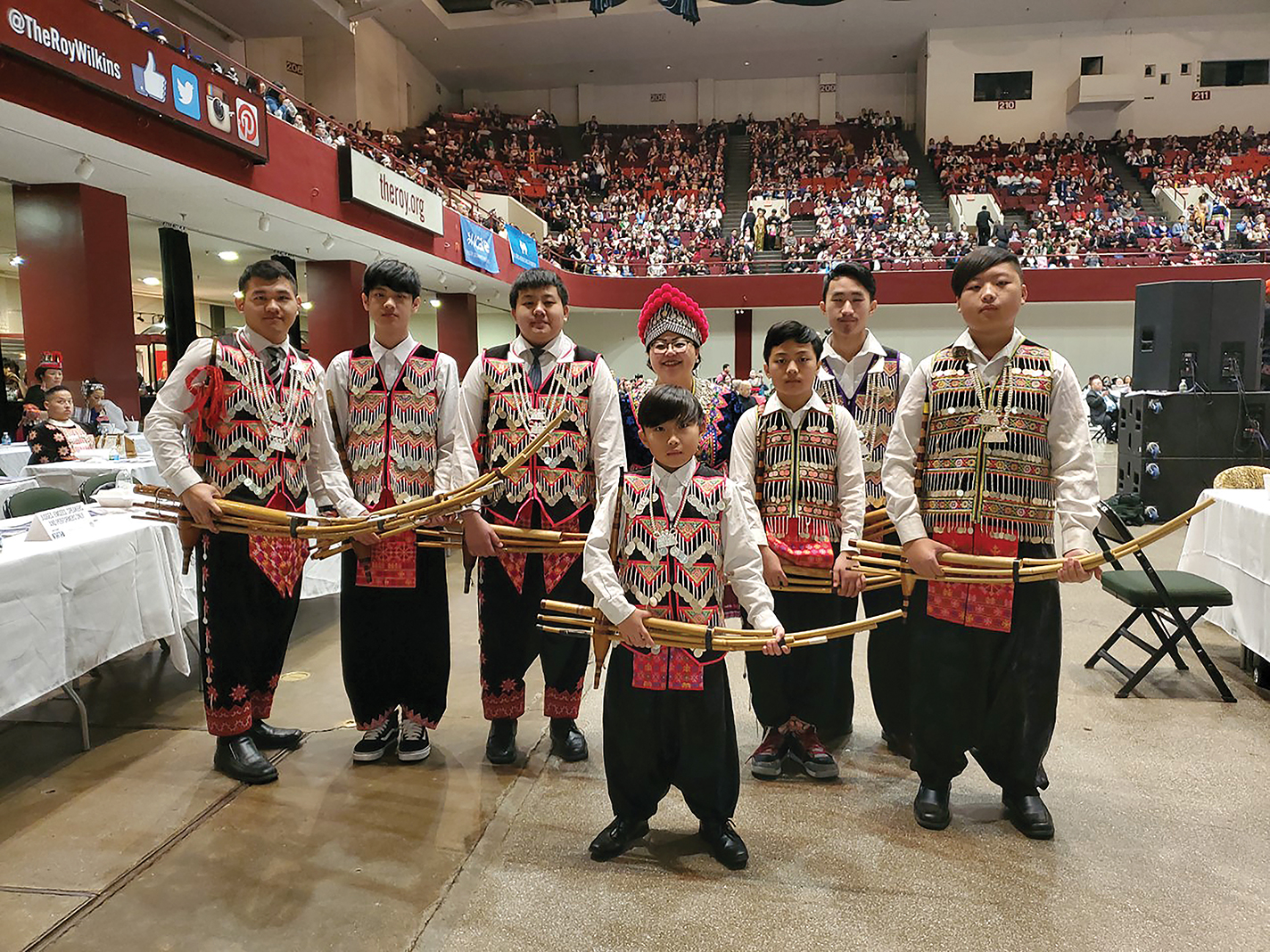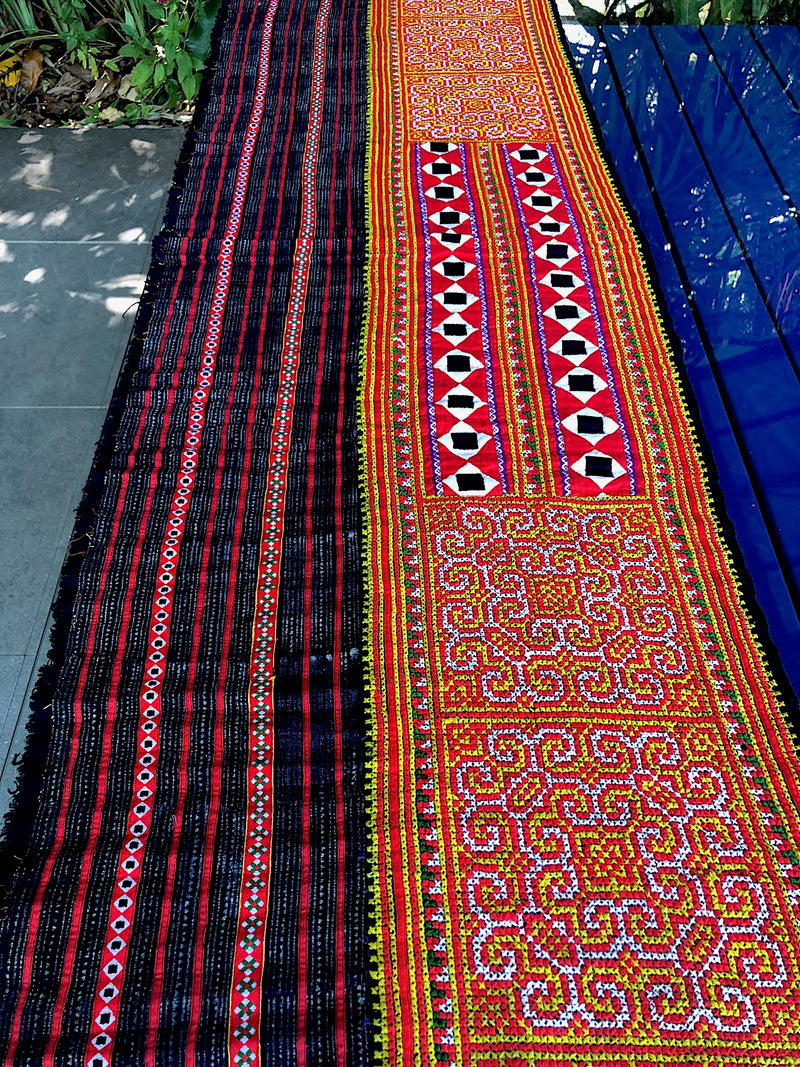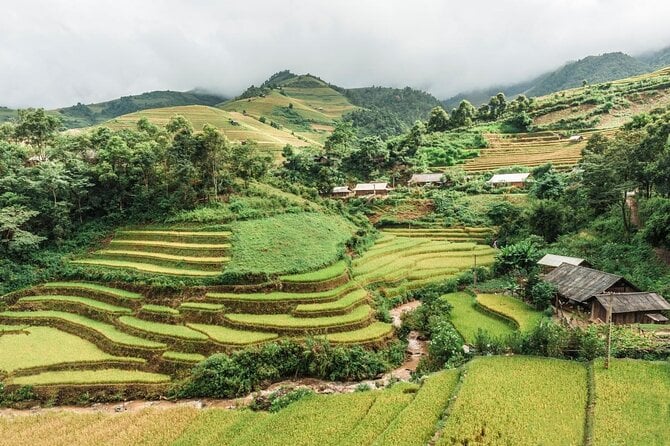Timeless Traditions: Immerse in a Hmong Village, Vietnam

Background information about Hmong Village and its significance
Hmong Village is a cultural and ethnic community located in the mountainous regions of Southeast Asia, particularly in Laos, Vietnam, Thailand, and China. The Hmong people are known for their vibrant culture, rich traditions, and close-knit community. The village represents their way of life, providing insight into their customs, beliefs, and daily routines. It is an opportunity to experience the Hmong culture firsthand and learn about their history and heritage.
Why immersing in a Hmong Village is a unique and enriching experience
-
Cultural Immersion: Immerse yourself in the Hmong way of life, interact with locals, and experience their traditional practices. From the arts and crafts to the music and dance, every aspect of Hmong culture is unique and captivating.
-
Traditional Crafts: Witness the intricate craftsmanship of the Hmong people. They are renowned for their embroidery, batik art, silver jewellery, and traditional clothing. You can even participate in workshops and learn these traditional skills from the locals.
-
Culinary Delights: Indulge in delicious Hmong cuisine. The village offers a variety of traditional dishes prepared with fresh, locally sourced ingredients. Try specialities like Hmong sausage, stuffed rice balls, and various soups that will tantalize your taste buds.
-
Homestays: Experience the warmth and hospitality of Hmong families by staying in their traditional homes. This provides a unique opportunity to learn about their daily lives, traditions, and customs firsthand.
-
Community Bonding: Engage with the close-knit Hmong community and witness their strong sense of togetherness. Participate in community activities such as festivals and celebrations that showcase their traditional music, dance, and rituals.
-
Natural Beauty: Hmong villages are often nestled in scenic landscapes, surrounded by lush green mountains and pristine rivers. Enjoy the tranquillity of nature, take walks through rice fields, and explore the breathtaking surroundings.
-
Educational Value: Immerse yourself in a different culture and learn about the struggles and triumphs of the Hmong people. Gain a deeper understanding of their traditions, language, and history, which can broaden your perspective and knowledge.
Immersing yourself in a Hmong Village offers a unique and enriching experience that enables you to appreciate a different way of life, connect with a vibrant community, and gain a deeper understanding of a rich and culturally diverse world.

Explore the Hmong Culture
Traditional Hmong clothing and accessories
When you immerse yourself in a Hmong Village, you can witness the intricate craftsmanship of the Hmong people firsthand. The Hmong are renowned for their traditional clothing, an essential part of their identity and heritage. You can marvel at the vibrant patterns and colours of their embroidered clothing, witness the beauty of their batik art, and admire their handcrafted silver jewellery. Those interested in learning these traditional skills can even participate in workshops and learn embroidery techniques from the locals. By exploring their clothing and accessories, you gain a deeper understanding of the Hmong culture and their commitment to preserving their history through art and craftsmanship.
Authentic Hmong music and dance performances
One of the highlights of immersing yourself in a Hmong Village is the opportunity to witness authentic Hmong music and dance performances. The Hmong people have a rich musical heritage, with unique traditional instruments and captivating melodies. You can experience the joy of their lively dance performances, which often accompany celebrations and festivals. The rhythmic movements and colourful costumes combine to create a mesmerizing spectacle that truly captures the essence of the Hmong culture. By immersing yourself in these performances, you appreciate the beauty of their art and gain insight into the stories, traditions, and beliefs passed down through generations.
Exploring the Hmong culture through their clothing, accessories, music, and dance offers a unique and enriching experience. It allows you to connect with a vibrant community, learn about their customs and traditions, and gain a deeper understanding of a rich and culturally diverse world.
Traditional Hmong Cuisine
Delicious Hmong dishes and their ingredients
When you dive into Hmong cuisine, you are in for a treat. Hmong dishes are known for their bold flavours and fresh ingredients that tantalize the taste buds. One popular dish is "laab," a savoury minced meat salad typically made with chicken, pork, or beef. The meat is mixed with lime juice, fish sauce, and an array of herbs and spices, creating flavours in every bite. Another favourite is "Hmong sausage," a unique blend of ground pork, herbs, and spices stuffed into natural casings made from pork intestines. These sausages are usually grilled or fried to perfection, resulting in a juicy and flavorful delight.
Other Hmong dishes include "bamboo soup," a hearty soup made with bamboo shoots, mushrooms, and pork. The bamboo lends a unique earthy flavour to the soup, while the mushrooms and pork add depth and richness. "Kaeng hung ley," a Hmong curry, is another popular dish that showcases the influence of neighbouring cultures like Thailand and Laos. This aromatic curry is made with pork, ginger, garlic, and a blend of spices, resulting in a fragrant and mouthwatering dish.
Unique cooking methods and cultural significance
Exploring Hmong cuisine allows you to savour delicious dishes and provides insights into the rich cultural heritage of the Hmong people. Traditional Hmong cooking methods often involve grilling, steaming, or stir-frying, resulting in flavorful and nutritious dishes. Using fresh herbs, spices, and seasonal ingredients enhances the taste and adds depth to the dishes.
Cooking and sharing meals hold great cultural significance in the Hmong community. It is a way of fostering connections, strengthening family bonds, and celebrating milestones and festive occasions. Hmong meals are often enjoyed together, with dishes placed in the centre of the table for everyone to share. This communal style of dining cultivates a sense of unity and togetherness.
Exploring the world of Hmong cuisine offers a wonderful opportunity to experience the Hmong people's flavours, traditions, and cultural richness. From savoury salads to aromatic curries, each dish tells a story and reflects the Hmong community's vibrant and diverse culinary heritage.

Participate in Hmong Festivals and Celebrations
Vibrant Hmong New Year festivities
Delve into the world of Hmong culture by immersing yourself in their vibrant New Year festivities. Hmong New Year is a grand celebration showcasing the Hmong people's rich traditions, customs, and folk arts. During this festive period, the Hmong community honours their ancestry, expresses gratitude, and welcomes the coming year.
One highlight of the Hmong New Year celebration is the traditional ball toss, known as "pov pob." This exciting event involves throwing a colourful ball with cloth streamers attached into the air, symbolizing good luck, abundance, and prosperity. The ball is caught by participants using a traditional bamboo pole. The energy and excitement during this activity are contagious, creating a joyful and festive atmosphere.
Another integral part of the Hmong New Year festivities is the vibrant traditional clothing worn by the community. The Hmong people take pride in their intricately embroidered outfits adorned with bright colours and intricate patterns. During the New Year celebration, you can witness a stunning display of these traditional costumes, each representing a specific Hmong clan or sub-group.
Colourful Hmong weddings and rituals
Attending a Hmong wedding is a unique and unforgettable experience. Hmong weddings are steeped in tradition and are filled with colourful rituals and ceremonies. One notable aspect of a Hmong wedding is the "Hmong bride price" negotiation. This tradition involves the groom's family offering gifts and items to the bride's family to express their love and commitment. The negotiation process is filled with lighthearted banter and serves as a way for both families to establish a strong bond.
Another significant ceremony within a Hmong wedding is the "hu plig" or "soul-calling" ceremony. This ritual ensures a strong spiritual connection between the couple and their ancestors. During the ceremony, a shaman performs prayers and offers sacrifices to unite the couple's souls and seek blessings for their future together.
Participating in Hmong festivals and celebrations allows you to witness firsthand the Hmong community's deep-rooted traditions, customs, and vibrant cultural heritage. By immersing yourself in these joyous occasions, you gain a deeper appreciation for the Hmong culture, create lasting memories, and forge new connections within the community.

Traditional Hmong Crafts and Artwork
Intricate Hmong embroidery and textile art
One of Hmong culture's most distinctive and exquisite aspects is its intricate embroidery and textile art. The Hmong people are renowned for their exceptional embroidery skills, showcased in traditional clothing and textiles. Each piece tells a story and reflects the Hmong people's rich history and way of life.
The embroidery patterns often feature vibrant colours, intricate motifs, and symbolic designs. The Hmong women spend countless hours meticulously hand-stitching these patterns, passing down their skills and knowledge from generation to generation. The result is breathtaking artworks that capture the essence of Hmong culture.
Handmade Hmong silverware and jewellery
Another remarkable craft of the Hmong people is their skill in creating handmade silverware and jewellery. Hmong silverwork is characterized by its intricate filigree patterns and unique designs. The silversmiths skillfully work with silver to create beautiful necklaces, bracelets, earrings, and decorative ornaments.
Hmong silver jewellery holds deep cultural and symbolic significance for the community. It is often worn during special occasions and serves as a form of expression and identity. Each piece of Hmong silverware is handmade, making it a truly special and valuable work of art.
Participating in Hmong festivals and celebrations not only allows you to immerse yourself in the vibrant traditions and customs of the Hmong community but also provides an opportunity to appreciate their remarkable craftsmanship. Witnessing the intricate embroidery and silverwork firsthand gives you a deeper understanding of the Hmong culture and their dedication to preserving their heritage through art.

Hmong Village Traditions and Customs
Traditional Hmong marriage customs and rituals
When it comes to Hmong marriage customs, many unique and fascinating traditions take place. One of the most important rituals is the Hmong marriage proposal, in which the groom's family sends matchmakers to the bride's family to ask for her hand in marriage formally. This ceremony involves the exchange of gifts and a negotiation process.
Another significant tradition is the bride's goodbye ceremony, "hu plig." This ceremony takes place during the wedding day and involves the bride bidding farewell to her family and ancestors. It is a touching and emotional moment that symbolizes the bride's transition into her new married life.
The wedding is a grand celebration filled with music, dancing, and traditional costumes. The ceremony typically takes place in the bride's family home and involves various rituals, such as tying the bride and groom's wrists with a white thread to symbolize their unity.
Significance of Shamanism in Hmong Culture
Shamanism holds a significant place in Hmong culture and plays a crucial role in their spiritual beliefs and practices. The Hmong believe in the presence of spirits in their daily lives and seek the guidance and protection of shamans.
Shamans are revered as intermediaries between the spirit world and the physical world. They perform ceremonies and rituals to connect with the spirits, heal the sick, and provide spiritual guidance to the community. Shamanic rituals often involve chanting, drumming, and trance-like states to communicate with the spiritual realm.
The Hmong people have a deep respect for their ancestral spirits and believe in the concept of reincarnation. They consult shamans for various reasons, including seeking advice on important decisions, diagnosing illnesses, and resolving conflicts.
By understanding the significance of Shamanism in Hmong culture, you gain an appreciation for their spiritual beliefs and customs. Witnessing shamanic rituals and ceremonies during Hmong festivals allows you to experience their deep connection with the spiritual world.

Hmong Village Homestay Experience
Authentic Hmong accommodations and facilities
When you choose to stay in a Hmong village homestay, you can expect to experience traditional Hmong accommodations and facilities. The homes are typically made of wood and bamboo, with thatched roofs that blend harmoniously with the environment. The interior is decorated with traditional Hmong textiles and crafts, creating a warm and inviting atmosphere.
Most homestays offer basic amenities such as comfortable bedding, clean bathrooms, and simple but delicious meals the host family prepares. You will be able to live as the Hmong people do, immersing yourself in their culture and daily routines.
Additionally, some homestays provide unique experiences, such as participating in traditional Hmong cooking classes or learning handicraft skills from the local artisans. These activities allow you to further engage with the Hmong culture and gain firsthand knowledge of their traditions and customs.
Interacting with Hmong families and learning their way of life
A Hmong village homestay offers a rare opportunity to interact with local Hmong families and learn about their way of life. You will have the chance to converse with your host family, ask questions, and gain insights into their customs, beliefs, and values.
During your stay, you may have the opportunity to participate in various activities alongside the Hmong villagers, such as farming, weaving, or attending traditional ceremonies. These activities allow you to experience the Hmong way of life firsthand and appreciate their deep connection with nature and community.
By staying in a Hmong village homestay, you become part of the extended Hmong family for a brief period, fostering cross-cultural understanding and friendship. The experience will leave you with lasting memories and a deeper appreciation for the rich heritage and traditions of the Hmong people.

Outdoor Activities in the Hmong Village
Hiking and exploring the breathtaking landscapes
When you choose a Hmong village homestay, you are immersed in their culture and the stunning natural beauty of the surroundings. One of the best ways to experience this is by hiking trails that take you through lush forests, picturesque mountains, and cascading waterfalls.
As you hike, you will be treated to breathtaking views and have the opportunity to witness the diverse flora and fauna of the region. The Hmong people are intimately connected with nature, and they can guide you to the most scenic spots and share their knowledge of the local plants and wildlife along the way.
Participating in traditional farming practices
Farming is an integral part of the Hmong way of life, and you can gain firsthand experience by joining the villagers in their agricultural activities. From planting and tending to crops to harvesting and processing food, you will learn about the traditional farming techniques passed down through generations.
Working in the fields alongside the Hmong farmers will give you a deep appreciation for their sustainable farming methods and close relationship with the land. You may even have the chance to try your hand at activities like rice cultivation or cultivating medicinal herbs.
Exploring the outdoors in the Hmong village allows you to connect with nature and gain a deeper understanding of the Hmong people's connection to their environment. You will learn about their traditional farming practices and witness the breathtaking landscapes surrounding their village. These outdoor activities further enhance your homestay experience and create lifelong memories of your time with the Hmong community.
